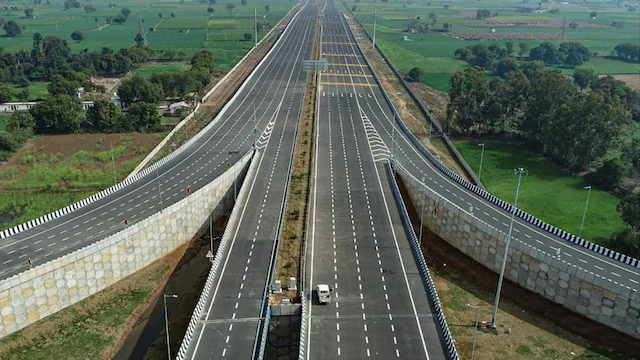Major Disruptions on Mumbai-Pune Expressway from Feb 11
Commuters on the Mumbai-Pune Expressway will face significant disruptions as the crucial exit towards Mumbai at Panvel is set to remain closed for six months from 11 February. The closure is part of the Kalamboli Junction Improvement Project, undertaken by the Maharashtra State Road Development Corporation (MSRDC), which includes the construction of a new flyover and an underpass at the site. With traffic diversions in place, motorists are likely to experience delays and increased congestion, particularly during peak hours. Navi Mumbai traffic officials have confirmed that restrictions will apply 24 hours a day for the entire duration of the construction, impacting both light and heavy vehicles heading towards Panvel, Mumbra, and JNPT.
Authorities have advised commuters to use alternative routes to navigate the closure. Vehicles traveling from the Mumbai-Pune Expressway towards Panvel, Goa, and JNPT will be redirected to National Highway-48 via Palaspe Circle at Konphata, a detour of nearly 10 km. Similarly, those traveling from Pune towards Mumbai and heading towards Taloja, Kalyan, and Shilphata will be required to continue on the Panvel-Sion Highway for approximately 1.2 km before taking a right under the Purusharth Petrol Pump flyover and proceeding via Roadpali and National Highway-48. Traffic personnel will be stationed at key junctions to manage congestion, and motorists have been urged to plan their journeys accordingly.
The closure highlights the broader challenge of infrastructure development clashing with urban mobility. While the Kalamboli Junction Improvement Project aims to enhance long-term traffic efficiency, the immediate impact on daily commuters is considerable. The Mumbai-Pune Expressway, a vital arterial route connecting Maharashtra’s economic hubs, already experiences heavy congestion, particularly on weekends and during festive seasons. Similar projects in the past, such as the construction of the Sion-Panvel Expressway, have led to short-term travel disruptions before easing traffic movement post-completion. However, questions remain about whether adequate measures have been implemented to mitigate the inconvenience caused to thousands of daily commuters.
From a sustainability perspective, the prolonged closure raises concerns over increased vehicular emissions due to diversions and longer travel times. Traffic congestion contributes significantly to air pollution, and with vehicles idling longer on alternative routes, carbon emissions are expected to rise. Effective traffic management, coupled with a push for sustainable urban mobility solutions such as expanded public transport options, could help counterbalance these environmental concerns. As authorities proceed with infrastructure upgrades, a more integrated approach is needed—one that not only improves connectivity but also ensures minimal disruption to the environment and daily life.




